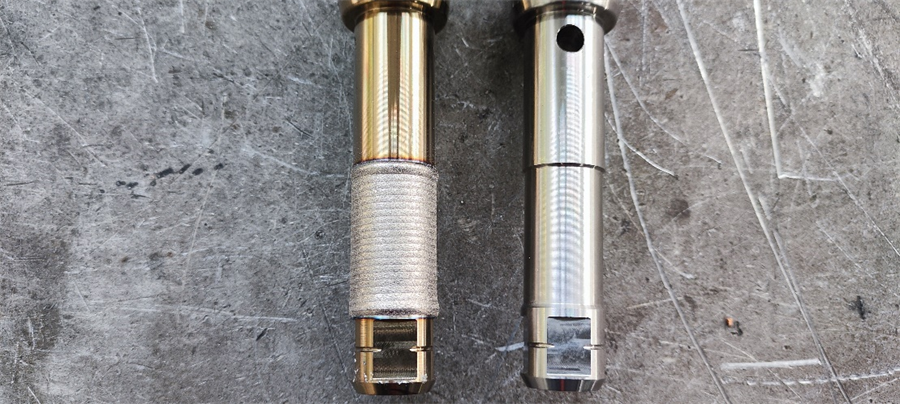In modern industrial manufacturing and mechanical transmission systems, transmission shafts, as key components, bear the important task of transmitting torque and rotary motion. Its performance and life expectancy directly affect the overall operational efficiency and reliability of the equipment. However, transmission shafts are often exposed to high abrasion, corrosion and stress during operation, and are highly susceptible to wear and fatigue damage, leading to frequent repairs and replacements, increasing the operating costs and downtime of the organization.
In order to improve the durability and performance of driveshafts, the advanced surface engineering technology of driveshaft cladding has emerged. By coating the surface of the transmission shaft with a layer of high-performance material, transmission shaft cladding technology provides excellent wear resistance, corrosion resistance and fatigue resistance, thus significantly extending the service life of the transmission shaft and improving the overall performance of the equipment.
What is a transmission shaft?
The transmission shaft is one of the key components in a mechanical transmission system for transmitting torque and rotary motion. It connects a power source (such as an engine or electric motor) to a mechanical load (such as a wheel or other drive), transferring power from one place to another.

Its main roles include:
1. Transmission of power: the engine or motor generated by the power transmission to the working part of the mechanical equipment.
2. Coordinate the operation: to ensure the coordinated operation between the various transmission components, to achieve the smooth operation of the equipment.
3. absorbing vibration: prolonging the service life of the equipment by absorbing and relieving the vibration and shock in the transmission system.
4. Adjusting angle and position: adapting to the change of angle and position between different working parts, maintaining the flexibility and efficiency of the transmission system.
Application Areas
Driveshafts are used in a wide range of applications, including but not limited to:
● Cars and trucks: used to transfer power from the engine to the drive wheels, especially more common in rear and four-wheel drive vehicles.
● Industrial machinery: used to transfer power and rotary motion in a variety of industrial equipment, such as in cranes, conveyor belts and heavy machinery.
● Trains and subways: Used to transfer power to the wheels to drive the train forward.
● Aerospace: In the drive train of airplanes and helicopters, transmission shaft are used to transfer power from the engine to the propeller or rotor blades.
Technical Introduction

Transmission shaft cladding is an advanced process of cladding highly wear-resistant materials onto the surface of transmission shaft, aiming to significantly improve the wear resistance, corrosion resistance and service life of transmission shaft. The newly developed cladding technology combines the latest material science and precision manufacturing processes to successfully develop this revolutionary transmission shaft product.
Advantages of surface cladding for transmission shaft
1. High abrasion resistance: High hardness materials are used for surface cladding to effectively resist abrasion and extend the service life of the equipment.
2. Corrosion resistance: the fused cladding layer can effectively prevent chemical corrosion, which is especially suitable for harsh working environments.
3. Cost-effectiveness: Significantly reduces equipment maintenance and replacement costs, improves productivity and lowers long-term operating costs.
4. Customization: A wide range of cladding materials and processes are available, which can be customized to meet the special requirements of different industrial fields.
Market Application
The technology has been successfully applied in many industries, including but not limited to automobile manufacturing, heavy machinery, mining equipment, petrochemical and other fields. Feedback from many customers indicates that the use of this transmission shaft cladding technology has significantly improved the stability of equipment operation, significantly reduced the frequency of maintenance, and effectively controlled the overall operating costs.
Post time: Jul-31-2024